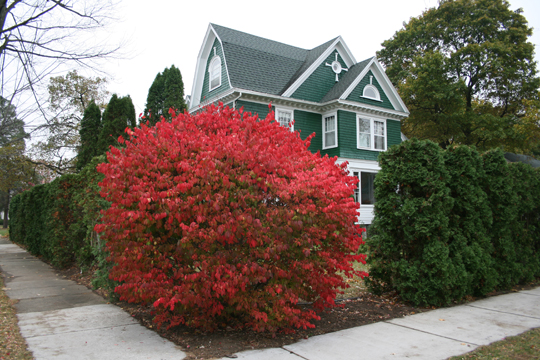David Stairs
I was over at Design Observer yesterday, reading Rick Poynor’s lament about the depressed state of design criticism. The comments, posted by the usual band of DO nabobs and groupies, were unusually critical. One commentator referred to DO as “a likedy-like NYC mafia,” and another mentioned the “deteriorating state of Design Observer.” This surprised me, and led me to follow a couple additional links.
One piece, “For Sale: The Earliest Modern Studio in America,” was criticized as a “real estate advert dressed up as historical commentary.” It describes the history of Jessica Helfand and Bill Drenttel’s studio home, and solicits purchase offers. Another essay by Helfand from a couple years ago, “Can Graphic Design Make You Cry?” is a piece extolling the virtues of communication that is personalized and strives “to join the manufactured thing…to the world of the living.” This got me to thinking about the hierarchies that exist within the design profession, and my humble position within them.
It goes without saying that, in the design world, I am an outlander. I don’t think “likedy-like NYC mafia” is a particularly cogent description of anyone. In my opinion, a sounder analogy would be “Yale design mafia.” This might include Sheila de Brettville, Michael Rock, Jessica Helfand and Bill Drenttel as well as their partner Michael Beirut, and a slew of their students too populous to enumerate. Some of these people, like Jessica, are alumni of the Yale program. The experience Jessica describes in her essay of having teachers whose “perspective was one that privileged rigor over voice, seeking the most reductivist solutions to life’s most complex problems” has been more famously propounded by Lorraine Wild, a 1982 Yale graduate, in “On Overcoming Modernism.” I have always been puzzled by the struggles of very smart people to break the bonds of “modernist myths.” Perhaps because I was a latecomer to design, possibly because I was 40 when I returned to grad school, I remember assuming that modernism was fraught with error, and was careful what I selected from its cannon. No bondage. No struggle. Just skepticism.

Ezra Winter House, Falls Village, CT., 1931. High Modernist
This is one of the things that most differentiates my practice from that of design insiders: a healthy mistrust of the profession. Albeit, I’ll be the first to admit such a stance would be precarious outside academia, and there have been those who questioned my fitness to direct young designers into industry. The privilege that accompanies AIGA awards and Art Directors Hall of Fame inductions does not accrue to mere mortals. With a couple of Fulbrights and a small Sappi grant to my design pedigree, I won’t be turning any heads from among the designerati anytime soon. But that doesn’t trouble me. Then again, as someone who has devoted a lifetime to the non-profit sector, who says I ought to direct anyone toward industry?
Back in the days when I still attempted to write for DO, Bill and I locked horns a couple of times. When I was working on “Why Design Won’t Save the World” he told me I was too mean spirited. I told him that, as an editor, he was “intrusive.” To a person as gentle as Bill, this was serious criticism. Another time, after referring slantingly to DO in a post about the gold rush among designers for socially relevant media Bill contacted me to say “even though I know you don’t approve of us…” or words to that effect, and I felt small, even though I’m not big to begin with, because making sensitive people self conscious is way too easy. Bill even corrected me one time when I referred to him as Howard Roarke, the antihero of Ayn Rand’s The Fountainhead, saying that I was much more like the outsider in question. He was right. I’d meant to compare him to Roarke’s adversary, Peter Keating.

Dr. Peter Richmond House, Mount Pleasant, MI., 1893. High Victorian
Aside from the fact that The Fountainhead is a mediocre work that doesn’t bear comparing to, there is another, better reason this last comparison would have been unjust in any multiverse. Although Bill may be leading a charmed life (he once told me when he turned down my invitation to sit on the DWB Board that he “wanted to succeed in whatever he undertook”), he is a very nice man. He was one of the only voices from the design world who wished me a quick recovery after my recent brush with death. And we exchanged pleasantries during his circumnavigation of the world with his family, Bill writing from Capetown to say Africa made him think of me.
How did I wind up in a Fringe episode on the far side of a dimensional rift from these people? I’ve even had a grant from the Rockefeller Foundation! While not the $1.5 million DO received to birth Change Observer, I did get $5,000. It went toward a Mac G-4 workstation for the art school at Makerere University, ordered from Mac Mall, trans-shipped by the U.S. State Department, and did Herculean service for seven years. Whether JH and WD purchased Winterhouse as a “fixer-upper” to sell to an upscale market, or just want to move on to other projects only they can answer, critics notwithstanding. As for me, I too live in an historic house. It just awaits me filing an onerous State of Michigan Historical Marker application. My 11 year old’s friends call it a “mansion” because, like any good Victorian, it has a service stairway to the upper storeys. But, at under 3000 square feet, it qualifies for little more than middlebrow mansion status. It hasn’t won any design awards, won’t appear in any architectural magazines, and the mortgage is currently underwater. But I do hold a title with provenance dating to 1856, when Mt. Pleasant was still Indian Territory, that tells me it was built by a pioneer doctor. This, at least, should prick up Ms. Helfand’s attention.

Vision, Heart, Economy, and a black endorsement on the right (2006)

Design, Culture, Change, and a black endorsement on the right (2003, revised 2009)
When it comes to blogs, my picayune Design-Altruism-Project does not qualify as a gnat on Design Observer’s butt, but, if Winterhouse Studio has rededicated itself to “a practice around social innovation,” then WD’s self-description as a “johnny-come-lately” is accurate. And, if DO, with its 100 or so writers and 342,000 odd Twitter followers, is, as John Thackara puts it, a “broad church,” then D-A-P, with its two dozen or so writers and 100 Twitter followers, is, as Wes Janz puts it, “a critical church of one at a time when “young people have been fleeing organized religion in droves.'” And, although I will never count any Fortune 500’s among my clients or underwrite a single design award, I have assisted any number of people in the developing world, and do have a growing list of former students who are finding design positions at non-profits.
So, here’s to being a post-modern, skeptical, uncelebrated outsider. In the immortal words of George Carlin:
“I’m an outsider by choice, but not truly. It’s the unpleasantness of the system that keeps me out. I’d rather be in, in a good system. That’s where my discontent comes from: being forced to choose to stay outside. My advice: Just keep movin’ straight ahead. Every now and then you find yourself in a different place.”
David Stairs is the founding editor of Design-Altruism-Project











Leave a Reply
You must be logged in to post a comment.